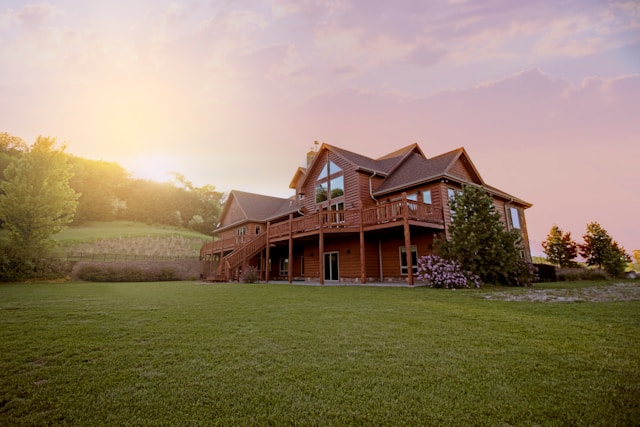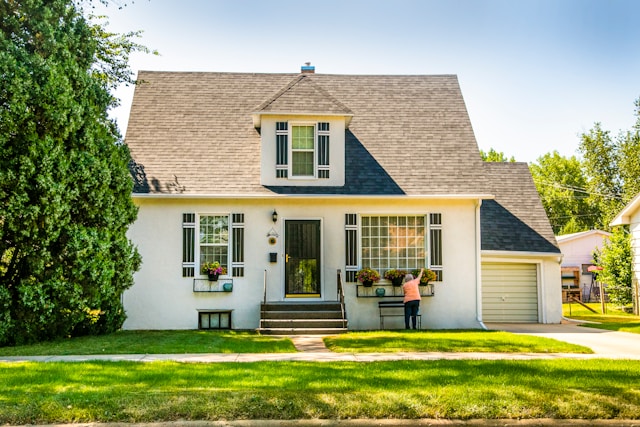Considering a HELOC or a reverse mortgage? This guide demystifies the heloc vs reverse mortgage dilemma by comparing key differences and helping you determine the right fit for leveraging your home equity.
Reverse Mortgage vs Home equity loan (or Home Equity Line of Credit) overview:
-
HELOCs offer flexibility for homeowners to access up to 65%-80% of their home’s appraised value, with variable interest rates and the requirement of interest payments during the draw period followed by principal repayment.
-
Reverse mortgages allow homeowners aged 62 or older to convert their home equity into cash without monthly payments until the home is sold or the owner moves out or passes away, but this decreases home equity and increases debt over time.
-
Choosing between a HELOC and a reverse mortgage depends on personal financial situations and goals, with HELOCs suitable for short-term financing and preserving inheritance, while reverse mortgages provide long-term income without monthly repayments but with implications for estate value.
Understanding Home Equity Solutions: HELOC and Reverse Mortgage

Leverage the equity in your home with a HELOC or reverse mortgage
HELOC and reverse mortgages are two prominent ways for homeowners to utilize their accrued home equity in Canada while continuing to live in their homes. A Home Equity Line of Credit (HELOC) is a revolving credit facility that allows homeowners to borrow, repay, and reborrow up to a set limit, offering access to up to 65% of the home’s appraised value minus the mortgage balance. For those seeking on-demand access to their home equity, the flexibility of home equity lines, such as a HELOC, makes it an appealing choice.
On the other hand, reverse mortgages offer a unique solution for Canadian homeowners aged 55 or older with considerable equity in their primary residence. For a more in-depth review of reverse mortgages, see our Reverse Mortgage Guide.
A reverse mortgage loan provides an opportunity to convert that equity into cash without monthly mortgage payments until the homeowner sells the house, moves out, or passes away. The homeowner can receive funds as a lump sum payment, or in set installments.
These funds can be used to pay for:
-
Property taxes
-
Keep up with cost of living expenses due to inflation
-
Renovate the home for accessibility so you can stay in your family home
-
Credit card debt
-
Pay for travel, golf, and other means of enjoying retirement.
However, it’s important to note that this method is accessing and depreciating the homeowner’s equity. To explore this option, it is crucial to consult with a reputable reverse mortgage lender.
Navigating HELOC: The Flexible Line of Credit

Home Equity Loans provide the flexibility of a line of credit
HELOCs provide a flexible approach to both borrowing and repayment. As you repay the HELOC, the available credit increases, providing a flexible borrowing option. With a HELOC, you have the freedom to draw funds as needed, repay them, and borrow money within the set credit limit. This credit limit can increase as the mortgage principal is paid down, offering access to up to 80% of your home’s appraised value.
However, HELOCs (one form of Home Equity Loans) typically feature variable interest rates based on financial institutions’ prime rates, which can affect your monthly payments as rates change. You’re required to make interest-only payments during the draw period, followed by repayment of both interest and principal over a set period. Negotiating HELOC interest rates with lenders is key to securing the best deal, so it’s important to pay interest to the terms offered by different institutions.
Unlocking Funds with Reverse Mortgages

Reverse mortgages unlock equity for this couple to travel
Reverse mortgages present a unique opportunity for homeowners aged 55 or older to access their home equity without the burden of monthly payments. With this option, you can receive reverse mortgage funds in the following ways:
-
Lump sum: Receive the entire amount as a lump sum, resulting in immediate interest on the entire amount.
-
Set installments: Receive funds in set installments over time, which may incur additional fees and adjustments to interest rates.
-
Line of credit: Access funds as a line of credit, allowing you to withdraw money as needed.
However, bear in mind that reverse mortgages have some drawbacks:
-
They gradually increase your debt while reducing your home’s equity.
-
This option may involve costs such as home appraisal, set-up fees, closing costs, potential prepayment penalties, and legal fees.
-
If you fail to meet property-related financial obligations, your home could be at risk of foreclosure.
Talk with a reverse mortgage lender or broker to ask about the pros and cons of a reverser mortgage for your specific situation.
Comparing HELOC and Reverse Mortgage: Key Differences
While both HELOCs and reverse mortgages allow homeowners to access their home equity, they have key differences in their repayment strategies, access to their home equity loan rates, and financial eligibility requirements.
Examining these differences will provide a clearer picture of these two options.
Repayment Strategies
When choosing between a HELOC and a reverse mortgage, the repayment period is a critical factor to consider. For a reverse mortgage, repayment is required when the homeowner either sells the home, changes their primary residence, or passes away. This allows those on a fixed income to live in their homes without the burden of regular monthly loan repayments, offering financial freedom. In this context, it’s essential to weigh the pros and cons of reverse mortgage vs other options like HELOCs.
On the other hand, HELOCs require regular monthly payments, typically consisting of interest and possibly some principal. Consequently, borrowers need to manage their repayments diligently, since missing regular principal and interest payments could potentially trigger the lender to call the loan, posing risk to the loan balance.
Access to Equity
The extent of equity homeowners can tap into varies between these two options: home equity loan and HELOC. Homeowners can typically borrow up to 80% of their home’s value through a HELOC. This allows you to utilize a substantial portion of your home’s value for major expenses, like home renovations or education costs.
With a reverse mortgage, on the other hand, you can access up to 55% of your home’s appraised value, which may extend to 59% in certain situations. The amount you can qualify for with a reverse mortgage is influenced by:
-
Your age
-
Your home’s location
-
Your property type
-
Your gender
-
The number of occupants living in the home
The details of reverse mortgages are different in Canada from the United States. Learn about the specifics of Canadian Reverse Mortgages.
Financial Eligibility
Financial eligibility requirements are another key difference between these two options. To qualify for a HELOC, you must meet certain credit and income requirements and credit verification requirements. These include:
-
Having a credit score of 680 or possibly as low as 620
-
A history of punctual debt repayments
-
15 to 20 percent equity in the home
-
A reliable and sufficient income source
-
Going through an appraisal of the home by the lender.
On the contrary, reverse mortgages do not have strict credit requirements and do not require income verification, but they do necessitate the homeowner’s ability to maintain the property and pay related taxes and insurance. Hence, reverse mortgages become a viable option for homeowners with significant home equity, even without a strong income or credit score.
Evaluating Costs: Interest Rates and Fees
Considering the associated costs is essential when choosing between a HELOC and a reverse mortgage. Here are some key points to consider:
-
Reverse mortgage interest rates are typically fixed
-
HELOC rates are variable and can fluctuate with the prime lending rate
-
Interest rates for reverse mortgages are generally 1.50 to 2 percent higher than home equity loans
Additionally, you should be aware of the associated fees. HELOCs and home equity loans generally have lower or no fees compared to reverse mortgages, which have higher closing costs. Reverse mortgages might include additional costs such as appraisal fees, setup fees, and possible prepayment penalties. However, the interest on HELOCs and home equity loans is generally not tax-deductible unless the funds are used for home improvements.
Pros and Cons of HELOC vs Reverse Mortgage
Both HELOCs (or a home equity loan) and reverse mortgages come with their own set of advantages and disadvantages. Here are some benefits of choosing a HELOC.
Now, let’s explore the advantages of a reverse mortgage.
Benefits of Choosing a HELOC
HELOCs come with several benefits that make them a popular choice among homeowners. One of the main benefits of a HELOC is its lower interest rates compared to unsecured loans and credit cards. This can make them a more cost-effective borrowing option, especially for homeowners who need to borrow a significant amount of money.
Another notable benefit of a HELOC is its potential tax benefits. Depending on how you use the funds, the interest on your HELOC might be deductible on your taxes. This can provide a financial advantage for homeowners looking to make large-scale home improvements.
Advantages of Opting for a Reverse Mortgage
Reverse mortgages also have their own set of advantages. One of the key benefits of a reverse mortgage is the elimination of the need for regular monthly loan repayments. This can provide a level of financial freedom, especially for homeowners on a fixed income.
Another advantage of a reverse mortgage is the ability to utilize the equity you’ve built up in your property while continuing to live in your home. This allows you to access your home equity without the need to sell your property, providing financial flexibility for those who wish to age in place.
In this article, we dispel some reverse mortgage myths.
Impact on Heirs and Estate Planning
Considering the impact of a HELOC or a reverse mortgage on your heirs and estate planning is also vital. Heirs of homes with reverse mortgages have the option to:
-
Sell the property
-
Repay the lender to keep the home
-
Turn over the keys to the lender if the remaining balance on the mortgage exceeds or just covers the home’s value (or if the sale of the home is necessary to pay unpaid property taxes for instance)
The accumulated interest on a reverse mortgage until the mortgage ends can potentially reduce the amount of inheritance that is passed on to heirs.
On the other hand, while the property with a HELOC remains an asset for heirs, it is at risk of foreclosure if the homeowner defaults on the loan payments. It’s always recommended to consult with financial advisors and have family discussions to understand the implications of these options on estate planning and costs.
Making the Decision: HELOC or Reverse Mortgage?
The decision between a HELOC and a reverse mortgage should hinge on your personal financial situation and long-term objectives. A reverse mortgage may be suited for homeowners who require a long-term income source and do not wish to leave their home as part of their estate, whereas a HELOC is preferred for short-term cash flow needs with manageable monthly repayments, preserving the home for heirs.
HELOCs can be processed in a much shorter time frame, sometimes less than 10 days, compared to the longer processing time required for reverse mortgages (although there are variables to consider for both).

Age in place with either a HELOC or Reverse Mortgage
Before making a decision, seek advice from financial advisors and consider other financial strategies such as:
-
Selling the home
-
Downsizing
-
Renting
-
Obtaining a different type of loan
Each option comes with its own set of benefits and drawbacks, and it’s crucial to understand which one aligns with your financial needs and goals.
Summary: Reverse Mortgage or HELOC in Canada
In conclusion, both HELOCs and reverse mortgages present viable options for homeowners seeking to tap into their home equity. HELOCs offer flexibility and lower interest rates, making them a cost-effective option for those with a strong income and credit score. On the other hand, reverse mortgages provide a way for older homeowners to access their home equity without the burden of monthly payments.
However, it’s essential to understand the potential impact of these options on your heirs and estate planning. Both options come with their own set of potential risks and rewards, and making an informed decision requires a clear understanding of your financial situation, long-term goals, and consultation with financial experts.
Frequently Asked Questions
Is HELOC the same as a reverse mortgage?
No, a HELOC requires monthly interest payments when you withdraw money, while a reverse mortgage does not require regular payments and is only repaid when you sell the home or pass away. HELOCs are based on income and credit score, whereas reverse mortgages disperse funds like an income stream.
Why is HELOC better?
A HELOC can be better because it offers the flexibility to borrow more money at lower interest rates for longer periods, and frequently carries a lower interest rate compared to a personal loan.
Is there a downside to having a HELOC?
Yes, there are downsides to having a HELOC, such as the risk of overspending and accumulating debt, and the potential to lose your home if you can’t keep up with payments. It’s important to carefully consider the risks and your own financial situation before pursuing a HELOC.
Can a reverse mortgage impact my heirs and estate planning?
Yes, a reverse mortgage can reduce the inheritance amount passed on to heirs due to accumulated interest until the mortgage ends. Be sure to consider this impact when planning your estate. View this article for an in-depth understanding or Reverse Mortgages in Canada.
Are there any tax benefits with a HELOC?
Yes, the interest on your HELOC might be tax-deductible, potentially providing a financial advantage for Canadian homeowners making large-scale home improvements.
What is a CHIP Reverse Mortgage?
CHIP is a brand of reverse mortgage from Home Equity Bank. Click here to read about the Pros and Cons of CHIP mortgages.









